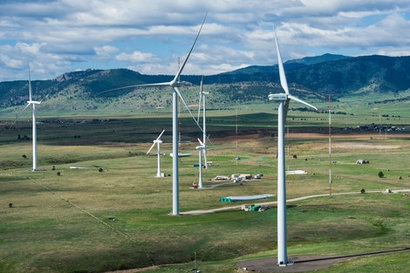
Many UK wind projects are now on the edge of viability, even without government subsidies, but political support remains vital to ensuring its continued prosperity, according to the new Finance Quarterly Q1 report from industry intelligence service A Word About Wind.
The report is the latest analysis published exclusively for the company’s rapidly expanding international membership of energy developers, financiers and investors. It provides insights into key mergers & acquisitions (M&A) transactions, data on the most notable deals of the past three months, economic country forecasts and investment analysis and is published four times a year.
A key focus of the latest edition is the UK market and its future direction in a post-Brexit world. The EU referendum and the resulting vote for Brexit caused enormous uncertainty in the UK wind sector and the changes to the economic climate affected internal investors and global players seeking to expand in the UK.
The immediate consequence of the referendum vote was the depreciation of the pound, which has lost 22 percent of its value against many other currencies since the vote. This has led to various other consequences. For example, consumer-price inflation has risen to its highest level since 2012, causing interest rates to rise accordingly. This is attested by the Bank of England’s move, in November, to raise its benchmark interest rate from 0.25 percent to 0.5 percent, the first rise in ten years. The International Monetary Fund predicts that the UK economy will grow by only 1.5 percent in 2018, as compared to an average annual GDP growth of 2.1 percent over the last 5 years.
However, the UK wind industry is flourishing. Despite the Brexit vote in June 2016, the UK ended that year with over 14 GW of wind power, putting it in third place in Europe for total installed wind capacity. A major contributor to this success is the political support shown for renewables by the UK government.
Although the Conservative government was widely criticized for cutting onshore wind subsidies in 2015, and although UK Chancellor Philip Hammond has ruled out new subsidies for renewables until after 2025, support for offshore wind from the government remains intact.
The government’s Clean Growth Energy Strategy confirmed plans to give £557 million support for renewables in upcoming Contract for Difference (CfD) auctions, which could support around 10 GW of new offshore wind capacity. The future for onshore wind also looks hopeful, with the Secretary of State for Business, Energy and Industrial Strategy, Greg Clark MP and minister Claire Perry implying that projects in Scotland and Wales could feature in a subsidy-free CfD auction in the spring.
“The support for renewables projects by the UK government over the years has been integral to the industry’s success” said Richard Heap, Editor, A Word About Wind. “We are increasingly seeing that projects can thrive without subsidies, but backing from politicians is still key. Their support will be important if the UK government is serious about making wind, particularly offshore wind, a Brexit success story.”
Mr Heap added that there is more that the Government could do, with the UK planning system remaining a significant obstacle to the progression of wind energy projects in that it currently gives local councils the power to veto wind farms larger than 50 MW.
According to Adam Barber, Managing Director at the Tamarindo Group, of which A Word About Wind forms a key part, it is ultimately regulatory policy that will make or break the industry. If the sector is to flourish, the obstacles presented by the planning system must be addressed.
For additional information:

